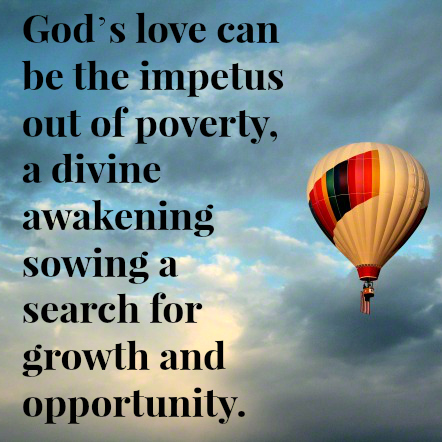
by Delisa Hargrove | Mar 27, 2014 | About Mormons
Though we live in a time of incredible opportunity, impoverished neighborhood cultures still influence people’s views on success. Negative influences can hamper a family’s economic development for generations.
Some analysts are very pessimistic about cultural trends in low-income communities and their impact on mobility. In Coming Apart, Charles Murray describes the sharp decline in poor neighborhoods of four “founding virtues” linked to economic improvement: industriousness, honesty, marriage, and religiosity. He and others also worry that the growing homogeneity of both rich and poor communities means those at the bottom are less likely to encounter upwardly mobile neighbors and positive social norms. Robert Putman sees such trends as trapping people in a low-achieving social class. Indeed, it should be no surprise that being raised in a neighborhood where it is accepted that few complete high school, or work steadily, or delay childbearing until it is economically viable, depletes the motivation to complete the steps needed to make it to the middle class. True, some do overcome such cultural stickiness. But NYU’s Patrick Sharkey observes that an upbringing in a very poor, segregated neighborhood is likely to have dire, multigenerational impacts. Stuart M. Butler
Another factor can help people “unstick” themselves and raise their sights. Joining themselves with a religious community whose doctrines and principles align with principles of success can give them new vision about their own status in life.

The Church of Jesus Christ of Latter-day Saints (often inadvertently called the “Mormon” Church) teaches principles of spiritual and temporal salvation. Faith in Jesus Christ propels you to act as He would act and to follow His teachings. Among the most basic of the Savior’s doctrines are truths of the divinity of the soul and the abundant nature of Heavenly Father who is the God of the universe. “Our Father which art in heaven, Hallowed be thy name” (Matthew 6:9) and “…we are the offspring of God…” (Acts 17:29). The Lord promised divine aid when asked! “And all things, whatsoever ye shall ask in prayer, believing, ye shall receive” (Matthew 21:22). God’s love can be the impetus out of poverty, a divine awakening sowing a search for growth and opportunity.
His truths are sound advice for self-reliance. Pay an honest tithing. Live within your means. Save a portion of earnings. Use time wisely. Develop skills and talents. Practice self-control and fortitude. Obtain an education. Be grateful and optimistic.
The following videos highlight Latter-day Saints who found abundance and success through the Gospel of Jesus Christ while honoring their roots.
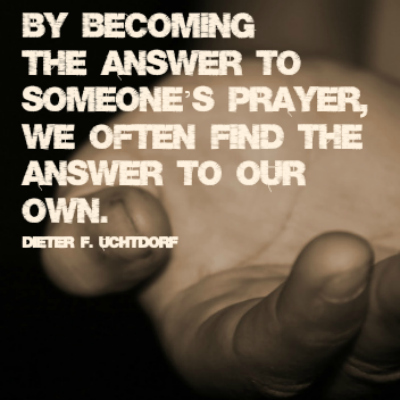
by Delisa Hargrove | Mar 24, 2014 | About Mormons
Recently The Church of Jesus Christ of Latter-day Saints (also inadvertently called the Mormon Church) shared its humanitarian aid efforts at a United Nations briefing on February 27, 2014. The briefing, one in a United Nations series called “Focus on Faith,” highlights Nongovernmental Organizations’ (NGO) impact around the world. LDS Charities, which is the humanitarian branch of the Church, garnered NGO status from the United Nations several years ago. In 2013, LDS Charities provided $84 million aiding nearly two million people in 130 countries.
Latter-day Saint Church representative Sharon Eubank, director of LDS Charities, said
To care for the poor is a foundational duty of anyone who reveres God and the brother and sisterhood of all — to serve, lift, bless, and relieve suffering independent of religious persuasions, social philosophy, nationality, tribe, gender or background.
[LDS Charities] emphasizes dignity, human worth, cooperation, unity, sacrifice, and the assurance that no one is too poor or too vulnerable or too marginalized to contribute something of value.
LDS Charities is unique in that it is entirely self-funded from donations, the distribution force is labor based, and it partners with other charitable organizations.

7 Initiatives of LDS Charities
1. Clean Water
LDS Charities provides wells and drinking systems for communities without access to clean water. The Church volunteers show local water committees how to maintain the water systems and provide community training on hygiene. Since 2002, LDS Charities has enabled over 7.5 million people to gain access to clean water.
A Thousand Days
http://ldscharities.org/videos/a-thousand-days?lang=eng
2. Neonatal Resuscitation
Since 2002, LDS Charities has trained 193,000 medical professionals “Helping Babies Breathe” to help resuscitate newborns born with breathing difficulties.
A Child’s First Breath
http://ldscharities.org/videos/neonatal-resuscitation-with-elder-holland?lang=eng
3. Mobility Assistance
LDS Charities works with local organizations to evaluate individual’s needs to provide the most appropriate assistance. Since 2002, over 415,000 people have received mobility devices.
Riqui’s Wheelchair
http://ldscharities.org/videos/riquis-wheelchair?lang=eng
4. Vision Care
LDS Charities provides supplies, equipment, and training to eye professionals improving eye care quality in local communities. Since 2003, over 550,000 have participated in LDS Charities’ vision projects.
World of Happiness
http://ldscharities.org/articles/world-of-happiness?lang=eng
5. Food
LDS Charities provides tools and gardening, storage, and nutritional training for families struggling to obtain food.
A Desolate Land Blossoms
http://ldscharities.org/videos/a-desolate-land-blossoms?lang=eng
6. Emergency Response
LDS Charities provides relief of food and other supplies immediately after a disaster.
LDS Charities Syrian Response 2013
http://ldscharities.org/videos/syrian-refugee-response?lang=eng
7. Immunizations
LDS Charities provides local volunteers to immunize people worldwide. Since 2003, 59,000 volunteers assisted in immunization campaigns in 35 countries.
Church Works Toward World Goal to Eliminate Preventable Diseases article
To learn more about The Church of Jesus Christ of Latter-day Saint’s humanitarian mission and aid, visit:
www.ldscharities.org
www.ldsphilanthropies.org
www.providentliving.org

by Keith L. Brown | Mar 13, 2014 | About Mormons
Lexi Walker is an eleven-year-old sixth grader from Sandy, Utah, who has been blessed with the extraordinary ability to capture the hearts of audiences with her amazing singing voice. Her musical talents have gained her merit and accolades worldwide as she has performed on television, on stage, and in different venues.
Included in her repertoire are such classics as “Pie Jesu” from Andrew Lloyd Webber’s “Requiem” and “Somewhere over the Rainbow” from the first-rate movie The Wizard of Oz. Add to her credits a most recent success of recording “Let It Go” from the Disney movie Frozen with world renowned singer Alex Boyé and the One Voice Children’s Choir which received around half a million views in its first day on YouTube, and 11 million views in the first 5 days.
A Professional Singer
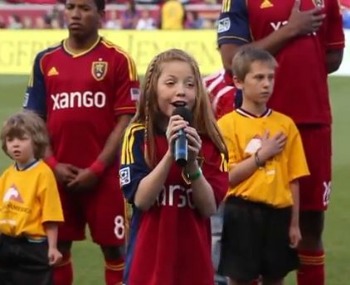 Lexi Walker launched her professional singing career about a year ago. She first made headlines after singing the National Anthem at a Real Salt Lake game in 2013. The YouTube video has gone viral. She has also performed at the Assembly Hall on Temple Square and Stadium of Fire. In an interview with Fox 13 News, Lexi was asked when she began singing, and she replied that she has been singing her whole life. She has remarked, “I’ve always loved the performing arts. I love the message that’s in songs… that the world is so fun.” [1]
Lexi Walker launched her professional singing career about a year ago. She first made headlines after singing the National Anthem at a Real Salt Lake game in 2013. The YouTube video has gone viral. She has also performed at the Assembly Hall on Temple Square and Stadium of Fire. In an interview with Fox 13 News, Lexi was asked when she began singing, and she replied that she has been singing her whole life. She has remarked, “I’ve always loved the performing arts. I love the message that’s in songs… that the world is so fun.” [1]
Lexi is a young girl with a powerful voice and is definitely well beyond her years in being able to interpret music in such an astounding way that has left audiences awestruck. After the Disney movie Frozen was released and the song “Let It Go” became popular, millions of people around the globe began to become familiar with the name Lexi Walker after she teamed up with Alex Boyé to cover the song. The YouTube video is a viral sensation with over 24.5 million views.
 The Today Show did a cover on “Let it Go,” because of how popular it is with young girls all over America, who seem to be singing it 24/7. The show featured video clips from YouTube.com of little girls belting the song, showed skaters skating to the piece in Central Park, and featured the New York Children’s Choir performing the song with three accomplished youth soloists, and Lexi was one of them, the youngest and smallest of the three talented girls.
The Today Show did a cover on “Let it Go,” because of how popular it is with young girls all over America, who seem to be singing it 24/7. The show featured video clips from YouTube.com of little girls belting the song, showed skaters skating to the piece in Central Park, and featured the New York Children’s Choir performing the song with three accomplished youth soloists, and Lexi was one of them, the youngest and smallest of the three talented girls.
When it comes to music, she loves everything Broadway, Jazz, Pop and Classical. Some of her favorite performances include singing the national anthem for the Stadium of Fire, the Jacksonville Jaguars, being a guest performer at Temple Square and singing for President Monson. She was also named the 2013-2014 Canyons School District K-12 Idol. Lexi is especially grateful for her family and all the support they give her! [2]
A Normal Sixth Grader
 Lexi’s family, including her grandmother, have been a major influence in helping her learn to sing. In addition to performing, she also likes to sing for fun.
Lexi’s family, including her grandmother, have been a major influence in helping her learn to sing. In addition to performing, she also likes to sing for fun.
However, her life is not just about the music, she is a sixth grade student and like most other students, she has her share of homework and school projects which keep her quite busy. Her favorite subjects are math, science, and art. She also loves Thai food, sushi, and lots of vegetables.
by byustudent | Feb 28, 2014 | About Mormons, Mormon Reflections
This article was written by Katherine T., a student at Brigham Young University.
Alma 42:27 “Therefore, O my son, whosoever will come may come and partake of the waters of life freely; and whosoever will not come the same is not compelled to come; but in the last day it shall be restored unto him according to his deeds.”
In our church we believe in free agency. We have the power to choose the course of action we take, and as a collective group we pattern our life after the Savior Jesus Christ. As a young adult (or emerging adult as my elders continue to remind me) I thought it was fitting to focus on a scriptures about free agency, because let’s face it I love being able to decide what to do. I love being in college and the freedom I have to decide for myself what to do, whom I hang out, and where I go. Finally I am at I point where I no longer have to follow the rules my parents have set for me, and what do I do?….I follow them anyway. (more…)
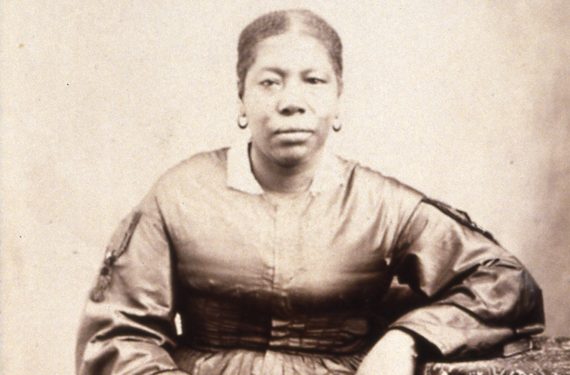
by Keith L. Brown | Feb 28, 2014 | About Mormons
The word “pioneer” is basically defined as a person who is among the first to explore or settle a new country or area. A synonym for the word “pioneer” is the word “trailblazer” which perfectly describes Jane Elizabeth Manning James, an early African-American member of The Church of Jesus Christ of Latter-day Saints (inadvertently referred to as the “Mormon” Church by the media and others).
A Young Seeker of Truth
 Jane Elizabeth Manning James was born to Isaac and Eliza Manning in Wilton, Connecticut, on 22 September 1822. At the young age of six, she went to live with the family of Joseph Fitch, a wealthy White farmer in Connecticut. She was raised by the Fitch’s daughter and lived as a servant in their home, but she was not a slave. She was a member of the Presbyterian Church, and it was there that she became grounded in Christian principles which later helped to prepare her to receive and accept the message of the gospel of Jesus Christ which was preached by two Mormon missionaries traveling through the area where she lived. In her own words, Jane recounted her conversion to Mormonism:
Jane Elizabeth Manning James was born to Isaac and Eliza Manning in Wilton, Connecticut, on 22 September 1822. At the young age of six, she went to live with the family of Joseph Fitch, a wealthy White farmer in Connecticut. She was raised by the Fitch’s daughter and lived as a servant in their home, but she was not a slave. She was a member of the Presbyterian Church, and it was there that she became grounded in Christian principles which later helped to prepare her to receive and accept the message of the gospel of Jesus Christ which was preached by two Mormon missionaries traveling through the area where she lived. In her own words, Jane recounted her conversion to Mormonism:
When about fourteen years old, I joined the Presbyterian Church—yet I did not feel satisfied. It seemed to me there was something more that I was looking for. I had belonged to the [Presbyterian] Church about eighteen months when an Elder of The Church of Jesus Christ of Latter-day Saints, [who] was traveling through our country, preached there. The pastor of the Presbyterian Church forbade me going to hear them as he had heard I had expressed a desire to hear them; nevertheless I went on a Sunday and was fully convinced that it was the true gospel he presented and I must embrace it. The following Sunday I was baptized and confirmed a member of The Church of Jesus Christ of Latter-day Saints. [1]
A Stalwart Pioneer
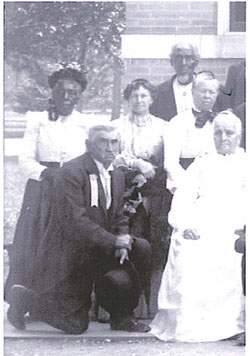 After hearing the Mormon Elder, Charles Wandell, preach the message of the restored gospel, Jane shared the message with other members of her family who were also baptized into The Church of Jesus Christ of Latter-day Saints.
After hearing the Mormon Elder, Charles Wandell, preach the message of the restored gospel, Jane shared the message with other members of her family who were also baptized into The Church of Jesus Christ of Latter-day Saints.
In 1843, one year after she was baptized and as preparations were being made for the Latter-day Saints in the area to immigrate to Nauvoo, Illinois, Jane and eight members of her family joined the larger group. Again in her own words, Jane recounted the details of the arduous journey:
One year after I was baptized, I started for Nauvoo with my mother, Eliza Manning, my brothers Isaac Lewis, and Peter, my sisters, Sarah Stebbins and Angeline Manning, my brother-in-law Anthony Stebbins, Lucinda Manning (a sister-in-law), and myself in the fall of 1840 [sic]. We started from Wilton, Connecticut, and traveled by canal to Buffalo, New York. We were to go to Columbus, Ohio before our fares were to be collected, but they insisted on having the money at Buffalo and would not take us farther. So we left the boat and started on foot to travel a distance of over eight hundred miles.
We walked until our shoes were worn out, and our feet became sore and cracked open and bled until you could see the whole print of our feet with blood on the ground. We stopped and united in prayer to the Lord; we asked God the Eternal Father to heal our feet. Our prayers were answered and our feet were healed forthwith. [1]
When Jane and her family finally arrived in Peoria, Illinois, they were faced with opposition once again when the local authorities threatened to imprison them because they could not produce their “free papers” – papers stating that they were free Blacks and not slaves. After a time, they were able to convince the authorities that they had never been slaves, and therefore did not need “freedom papers,” and were allowed to continue on their way.
The Faith That Sustained Them in Their Journey
Frightened at the threat of imprisonment, they were anxious to move on but were slowed by a river. Seeing no bridge, they forded the river by walking into the stream until the cold water swirled around their necks. Afterward—wet, cold, frightened, and hungry—they pressed on their way, sleeping sometimes in the shelter of a log cabin, other times in the open, even when the snow fell. Jane remembered the faith that sustained them when she said, “We went on our way rejoicing, singing hymns, and thanking God for his infinite goodness and mercy to us, in blessing us—protecting us—and healing our feet.” As they approached La Harpe, Illinois, they prayed for a sick baby and it was healed. It was an exhilarating experience that gave them new hope as they entered the city of Nauvoo. [2]
Upon their arrival in Nauvoo, the welcome from the Mormons was not as warm as they had expected. In fact, as Jane recalls, her family of recent Black converts who had traveled many miles by foot to join with the Saints, was repudiated by some of the members.
A Prophet’s Warm Welcome
However, the Prophet Joseph Smith welcomed the wearied travelers with open arms into his home. She recalled that “Brother Joseph took a chair and sat down by me and said, ‘You have been the head of this little band, haven’t you?’ I answered, ‘Yes sir.’ He then said, ‘God bless you.’ “[2] Joseph assured the Mannings that they were among friends and would be protected, and invited them to stay at the Mansion House until homes could be found for them.
Within a week, members of the family were able to find homes and jobs, and on the morning that they were leaving Joseph’s home, he found Jane weeping and asked why she was upset. She responded, “The folks have all gone and got themselves homes, and I have got none.” [2]
“Yes, you have,” he said, “you have a home right here if you want it. You mustn’t cry, we dry up all tears here.” He left the room and returned shortly with Emma. “Sister Emma,” he said, “here is a girl that says she has no home, haven’t you a home for her?”
Emma offered Jane the same warm hospitality she had given scores of others in similar need. Satisfied that the tears were over, the Prophet left Emma and Jane to arrange the details. Jane was a willing worker and told Emma of her skills. She could wash and iron clothes and was a good cook and housekeeper. “When you are rested,” Emma said, “you may do the washing, if you would just as soon do that.” Jane began the following morning. [2]
Jane remained part of the Smith household for several months. She enjoyed the associations of Joseph and Emma’s family, and she often visited with Lucy Smith, Joseph’s mother. She soon became friends with other members of the household including Sarah and Maria Lawrence and Eliza and Emily Partridge.
An Eternal Family of Her Own
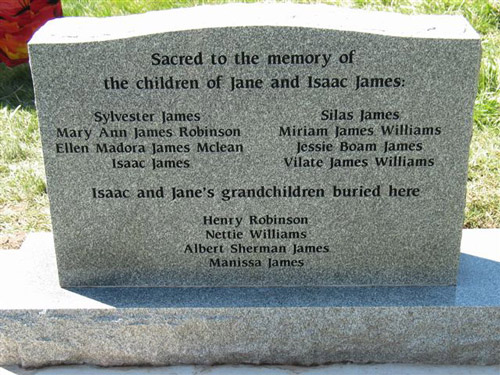 After the Prophet was martyred in the Carthage Jail in Carthage, Illinois, she went to live in the home of Brigham Young. It was there that she met and married Isaac James, a native of New Jersey, who had converted to Mormonism in 1839 at the age of 19. After they were married, the couple left for the Utah territory. In 1846, Jane gave birth to her second son while at Winter Quarters, Nebraska. Isaac and Jane Manning James and their sons Sylvester and Silas were the first free blacks to settle in Utah. They immigrated with the Ira Eldredge Company, and arrived in the Salt Lake Valley on 19 September 19 1847. In the spring of 1848, Isaac and Jane became the parents of Mary Ann, the first Black child born in Utah.
After the Prophet was martyred in the Carthage Jail in Carthage, Illinois, she went to live in the home of Brigham Young. It was there that she met and married Isaac James, a native of New Jersey, who had converted to Mormonism in 1839 at the age of 19. After they were married, the couple left for the Utah territory. In 1846, Jane gave birth to her second son while at Winter Quarters, Nebraska. Isaac and Jane Manning James and their sons Sylvester and Silas were the first free blacks to settle in Utah. They immigrated with the Ira Eldredge Company, and arrived in the Salt Lake Valley on 19 September 19 1847. In the spring of 1848, Isaac and Jane became the parents of Mary Ann, the first Black child born in Utah.
BYU Play Celebrates the Life of Jane Elizabeth Manning James
As Black History month draws to a close (in February 2014), Brigham Young University (BYU) is presenting the award-winning play “I Am Jane” which celebrates the life of Black Mormon pioneer, Jane Elizabeth Manning James. The cast of the play consists of nearly all Black actors. The play will be performed nightly from 25 February through 1 March at 7:30 PM, with a 2:00 PM matinee on Saturday in the Joseph F. Smith Building on the Provo, Utah campus. All characters in the play portray actual historical figures, and the script includes actual words that were spoken by the figures portrayed as often as possible.
With only 265 students of African lineage out of a student body of 30,000 students, finding enough actors to fill all of the roles for the presentation was not an easy task. So, why go through the trouble of putting on such a production? Playwright and Professor, Margaret Young, stated, “Simply because it matters, and this year it matters even more than it has previously.” [3] She notes that The Church of Jesus Christ posted a new online gospel topic on “Race and the Priesthood” which addressed the previous Priesthood ban which prohibited Black males from holding the Priesthood, and Blacks in general from participating in temple rituals. Although the ban ended in 1978, justification for the ban has continued for decades.
“Today, the church disavows the theories advanced in the past that black skin is a sign of divine disfavor or curse, or that it reflects actions in a premortal life; that mixed-race marriages are a sin; or that blacks or people of any other race or ethnicity are inferior in any way to anyone else,” the church statement says. “Church leaders today unequivocally condemn all racism, past and present, in any form.” [3]
Young further states that those involved in the production “hope that it will inspire the empathetic imagination in all who see it, that all may be edified and also challenged. Janes’ faith, which saw beyond any racial distinctions should mentor our faith.” [3]
Jane Elizabeth Manning James died on 16 April 1908 in Salt Lake City. A special monument to her is located in the Salt Lake City Cemetery, close to her grave site, to commemorate her life and faith.
Resources:
Race and the Priesthood
Jane Manning James: An Independent Mind










